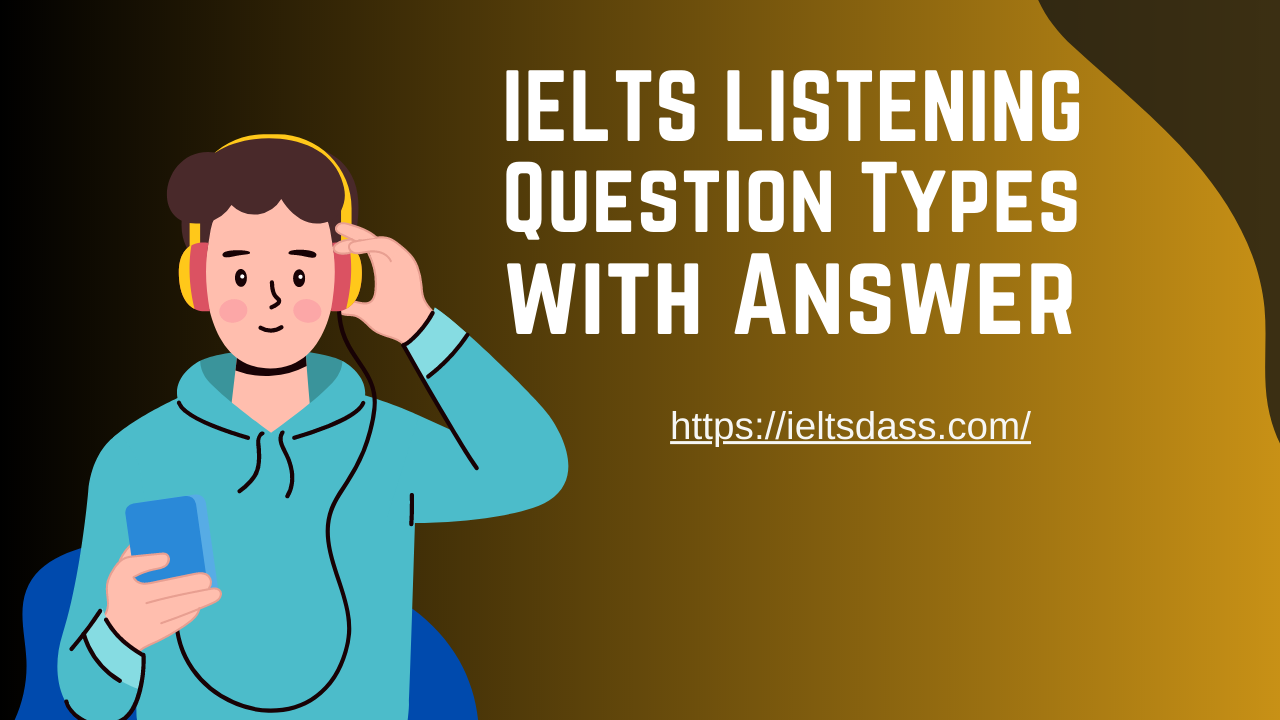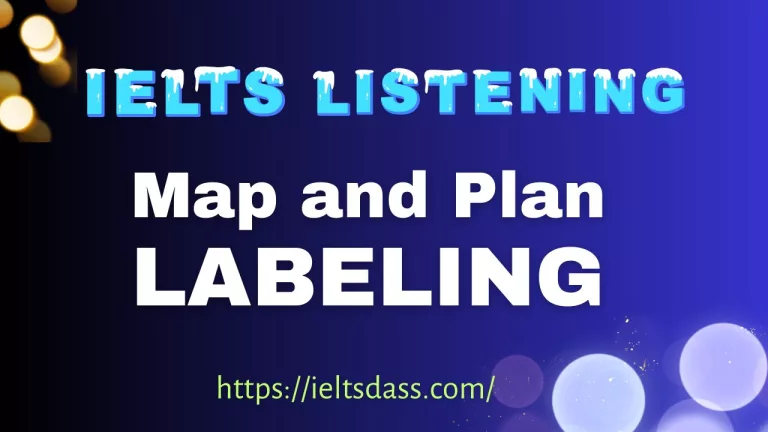Listening Question Types with Answer
An international language test for candidates who want to go abroad is the “IELTS” International English Language testing system. IELTS consists of four different sections, and IELTS listening is included in them. In this article, you will come to know about IELTS Listening question types.
IELTS Listening Question Types
The 7 different types of questions are given in IELTS listening. IELTS listening is composed of four sections and each consists of ten questions. You will have half an hour to attempt 40 questions, and extra10 minutes are given to transfer answers to the answer sheet in case of paper based test. If you are attempting computer based, then 2 extra minutes are allowed to review your answers.
Following are the IELTS Listening question types:
- Multiple choice questions
- Matching
- Form completion
- Sentence completion
- Summary completion
- Labeling diagrams or maps
- Short answer question
Multiple choice questions
In this question type, you will have 3 to 4 options, and you have to choose one of them. A skill-based activity that needs an excellent form of preparation. Synonyms and paraphrased sentences are widely used in these types of questions, and you have to pick the right answer.
Following are the skills that you need to identify the correct answers skilfully.
You must have the skill to look at the specific information. In listening, there must be distractions in it, as the following example shows
- Hey Liana! I think the house is on street four. Lianasays to Lisa no, you have misunderstood the information; the house was on street number three.
The examiner may have asked about writing the correct street number which is number three. You may be distracted and write the wrong answer in a hurry. Listen to the whole information, so that you would not be distracted.
- Another thing is, the examiner uses synonyms instead of original text. For example, in the original text, “rural area” is used, but when you listen, the examiner has used “away from the town” as a substitute for rural area, you may lose the answer. Be attentive to listening to synonyms, so that you can mark the correct answer.
- Encircle the main points not only from question statement but also from the given options. This strategy will help you a lot in picking the right information in less time.
Matching
In “matching” questions, the information is provided by the examiner, and you have to match these items with the description while listening to audio.
Question: Match the hobbies with the corresponding description (options may be shuffled).
Hobbies
- Photography
- Gardening
- Painting
Descriptions
A) Growing plants and flowers
B) Capturing moments with a camera
C) Creating art on a canvas
Answers: 1-B, 2-A, 3-C
These queries are common in section 1. You should know how to paraphrase questions, as this is the most important point in these queries.
Form filling questions
The most common queries are often asked in section 1. There is a conversation between two people about the social context in section 1. By listening to them, you have to find answers.
Example
Question: Complete the booking form
Name…….
Age……….
Answer: (Answers will vary according to recording)
Sentence completion
Sentences are provided with a gap between them. What you have to do is to fill the gap. The blank may be in between the sentences or may be at the end. Please note the word count instructions before solving these questions. Your answer will be marked wrong if you write more than the given word count.
Question: The main problem with the current transportation system is the lack of………
Answer (professionalism)
Note-Taking/summary completion
In this type of question, you have to complete the summary of the main points or idea presented in the audio. The summary is usually short and consists of key information. The task of the candidate is to listen to the audio and fill the gap to make the summary coherent and accurate.
Following are the things that you should consider while solving this summary completion:
- Skim the summary before the audio begins; this will help you to generate the general idea of the topic and missing information.
- Identify keywords as these will help you to anticipate the information you are looking for.
- Sometimes, you may not hear the exact words in the audio. In such cases, use your understanding of paraphrasing to solve the question
Question: Complete the notes on the lecture about environmental issues.
Problem: Air pollution is caused by vehicles, cars, buses, and ………
Answer: The answer will vary according to the recording.
Labelling diagram or maps
In this type of question, you will be presented with a visual representation (such as a labeled diagram, map, or plan) with some labels missing. Your task is to listen to the audio and complete this missing information. These questions assess your listening skills, ability to follow directions and understanding of spatial information.
Before the start of the audio, familiarize yourself with the diagram. Understand the overall structure of the diagram, and this will help you to visualize what a complete diagram will look like.
Pay attention to Identifying clues and context. These clues will be in existing labels, headings, or numbers of diagrams. Try to anticipate the type of information you might hear based on visual context.
Question: Label the parts of the digestive system on the diagram below. (Students will need to label “stomach”, “intestine”, “oesophagus” etc.).
Short-answer questions
In this question type, you will hear a short question spoken in the audio. What you have to do is to listen to the audio and answer the question briefly. These questions will test your ability to listen to specific details and recognize information quickly.
During solving these questions, be mindful of grammar and spelling. Make sure that your response is according to the grammatical structure required by the question. Be cautious with spelling, as misspelled answers are marked incorrect.
Question: What are the two primary colours mentioned in the presentation?
Answer: Red and Blue
5 tips for IELTS Listening module
- Practice active listening- Train yourself to catch essential information. Make sure you practice daily. Focus on understanding the context, main idea, and supporting details.
- Manage your time- You should know how to manage your time. The IELTS listening module allows some time at the beginning of each part to preview questions. Use this time wisely to skim through all the questions to get an idea about the context.
- Anticipate information- Try to anticipate information and predict answers. This will help to choose the correct answer and stay active during the audio.
- Focus on instructions- Pay close attention to the instructions and word limits for each question. Be mindful of any special instructions, such as using capital letters or plural words.
- Take notes actively- Develop note-taking skills. This will help you to note down key points, names, numbers, and other essential details while listening to the audio.
Conclusion- IELTS Listening question types with answers
The IELTS listening module evaluates your ability to understand spoken English in various contexts, and it is essential to prepare thoroughly to achieve a high score. By familiarizing yourself with different types of questions and learning the key strategies will help you to solve these questions with confidence.
Expose yourself to different English accents and practice regularly to achieve high bands in the listening module. With dedication and hard work, you will excel in this section.







